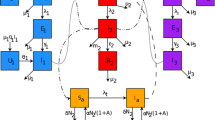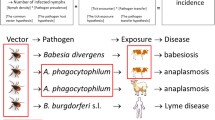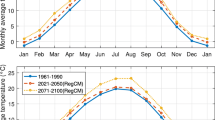Abstract
Crimean Congo Haemorrhagic Fever (CCHF) is an emerging zoonotic disease. The causative agent is a virus (CCHFV), mainly transmitted by ticks of the species Hyalomma marginatum in Eastern Europe and Turkey. In order to test potential scenarios for the control of pathogen spread, the basic reproduction number (R 0) for CCHF was calculated. This calculation was based on a population dynamics model and parameter values from the literature for pathogen transmission. The tick population dynamics model takes into account the major processes involved and gives estimates for tick survival from one stage to the other and number of feeding ticks. It also considers the influence of abiotic (meteorological variables) and biotic factors (host densities) on model outputs, which were compared with data collected in Central Anatolia (Turkey). R 0 computation was thereafter used to test control strategies and especially the effect of acaricide treatment. Simulation results indicate that such treatments could have valuable effects provided that the acaricide is applied regularly throughout the spring and summer, and over several years. Furthermore, a sensitivity analysis to abiotic and biotic factors showed that, even though temperature has a strong impact on model outputs, host (mainly hare) densities also play a role. The kind of model we have developed provides insight into the ability of different strategies to prevent and control disease spread and has proved its relevance when associated with field trials.



Similar content being viewed by others
References
Charron MVP, Seegers H, Langlais M, Ezanno P (2011) Seasonal spread and control of Bluetongue in cattle. J Theor Biol 291:1–9
Dobson ADM, Randolph SE (2011) Modelling the effects of recent changes in climate, host density and acaricide treatments on population dynamics of Ixodes ricinus in the UK. J Appl Ecol 48:1029–1037
Dobson ADM, Finnie TJR, Randolph SE (2011) A modified matrix model to describe the seasonal population ecology of the European tick Ixodes ricinus. J Appl Ecol 48:1017–1028
Ergonul O (2006) Crimean-Congo haemorrhagic fever. Lancet Infect Dis 6:203–214
Estrada-Pena A, Vatansever Z, Gargili A, Ergonul O (2010) The trend towards habitat fragmentation is the key factor driving the spread of Crimean-Congo haemorrhagic fever. Epidemiol Infect 138:1194–1203
Estrada-Pena A, Martinez Aviles M, Munoz Reoyo MJ (2011) A population model to describe the distribution and seasonal dynamics of the tick Hyalomma marginatum in the Mediterranean Basin. Transbound Emerg Dis 58:213–223
Estrada-Pena A, Jameson L, Medlock J, Vatansever Z, Tishkova F (2012) Unraveling the ecological complexities of tick-associated Crimean-Congo hemorrhagic fever virus transmission: a gap analysis for the Western Palearctic. Vector-Borne Zoonotic Dis 12:743–752
Estrada-Pena A, Ruiz-Fons F, Acevedo P, Gortazar C, de la Fuente J (2013) Factors driving the circulation and possible expansion of Crimean-Congo haemorrhagic fever virus in the western Palearctic. J Appl Microbiol 114:278–286
European Food Safety Authority (2010) Scientific opinion on the role of tick vectors in the epidemiology of Crimean-Congo hemorrhagic fever and African swine fever in Eurasia. EFSA J 8(8):1703
Flux JE, Angermann R (1990) Rabbits hares pikas status surv. conserv. action plan. The World Conservation Union, Gland, pp 61–94
Gordon SW, Linthicum KJ, Moulton JR (1993) Transmission of Crimean-Congo hemorrhagic fever in 2 species of Hyalomma ticks from infected adults to co-feeding immature forms. Am J Trop Med Hyg 48:576–580
Hartemink NA, Randolph SE, Davis SA, Heesterbeek JAP (2008) The basic reproduction number for complex disease systems: defining R 0 for tick-borne infections. Am Nat 171:743–754
Heesterbeek JAP (2002) A brief history of R 0 and a recipe for its calculation. Acta Biotheor 50:189–204
Hoch T, Monnet Y, Agoulon A (2010) Influence of host migration between woodland and pasture on the population dynamics of the tick Ixodes ricinus: a modelling approach. Ecol Model 221:1798–1806
Hoch T, Goebel J, Agoulon A, Malandrin L (2012) Modelling bovine babesiosis: a tool to simulate scenarios for pathogen spread and to test control measures for the disease. Prev Vet Med 106:136–142
Jameson LJ, Ramadani N, Medlock JM (2012) Possible drivers of Crimean-Congo hemorrhagic fever virus transmission in Kosova. Vector-Borne Zoonotic Dis 12:753–757
Matser A, Hartemink N, Heesterbeek H, Galvani A, Davis S (2009) Elasticity analysis in epidemiology: an application to tick-borne infections. Ecol Lett 12:1298–1305
Mertens M, Schmidt K, Ozkul A, Groschup MH (2013) The impact of Crimean-Congo hemorrhagic fever virus on public health. Antivir Res 98:248–260
Mount GA, Haile DG, Barnard DR, Daniels E (1993) New version of LSTSIM for computer simulation of Amblyomma americanum (acari: ixodidae) population dynamics. J Med Entomol 30:843–857
Ogden NH, Bigras-Poulin M, O’Callaghan CJ, Barker IK, Lindsay LR, Maarouf A, Smoyer-Tomic KE, Waltner-Toews D, Charron D (2005) A dynamic population model to investigate effects of climate on geographic range and seasonality of the tick Ixodes scapularis. Int J Parasitol 35:375–389
Porter R, Norman RA, Gilbert L (2013) A model to test how ticks and louping ill virus can be controlled by treating red grouse with acaricide. Med Vet Entomol 27:237–246
Saltelli A, Chan K, Scott EM (eds) (2000) Sensitivity analysis. Wiley Series in Probability and Statistics, Chichester
Sutton AJ, Karagenc T, Bakirci S, Sarali H, Pekel G, Medley GF (2012) Modelling the transmission dynamics of Theileria annulata: model structure and validation for the Turkish context. Parasitology 139:441–453
Walker JG, Klein EY, Levin SA (2014) Disease at the wildlife-livestock interface: acaricide use on domestic cattle does not prevent transmission of a tick-borne pathogen with multiple hosts. Vet Parasitol 199:206–214
Acknowledgments
This study was funded by EU grant FP7-261504 EDENext and is catalogued by the EDENext Steering Committee as EDENext340 (http://www.edenext.eu). The contents of this publication are the sole responsibility of the authors and do not necessarily reflect the views of the European Commission. A part of the work of ZV was also supported by the grant 108G191 of The Scientific and Technological Research Council of Turkey (TUBITAK).
Author information
Authors and Affiliations
Corresponding author
Electronic supplementary material
Below is the link to the electronic supplementary material.
Rights and permissions
About this article
Cite this article
Hoch, T., Breton, E., Josse, M. et al. Identifying main drivers and testing control strategies for CCHFV spread. Exp Appl Acarol 68, 347–359 (2016). https://doi.org/10.1007/s10493-015-9937-9
Received:
Accepted:
Published:
Issue Date:
DOI: https://doi.org/10.1007/s10493-015-9937-9




